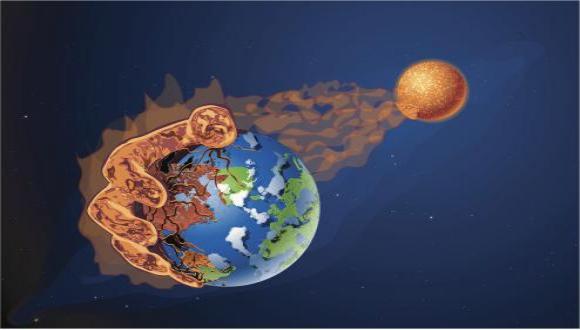How to protect the skin without damaging the environment? - Juliana Rodriguez Diaz
The commonly used sunscreen is bad for the environment and has health side effects for humans too. How can we avoid them? an article by Juliana Rodríguez Díaz, an International MA Student and participant of the Porter Internship program.
While participatingd in the Porter Internship program, Juliana wrote about environment, science, and ecology topics at Zavit, the news agency of the Israel Society of Ecology and Environmental Sciences (ISEES). Those topics were then transformed to articles published in mass media in Israel. As an example, see "Is the Environment back in Fashion", written and photographed by Juliana (the article is in Hebrew).
Here is an article by Juliana about mitigating the environmental and health issues of using sunscreen.
Juliana Rodríguez Díaz, photograph by Yael Zur
The commonly used sunscreen is bad for the environment and has health side effects to humans too. How can we avoid them?
Juliana Rodríguez Díaz, for Zavit
Summer is here, and the beach season is just starting. As the weather gets warmer, trips to the beach will become more usual and some people will even plan a longer stay by building a Zula or camping on the coastline.
Sounds fun, isn’t it? Well, definitely yes. However, as any other human activity, going to the beach has some undesirable side effects on the environment; from pollution caused by light, noise and solid waste to other long term, and less visible effects such as coral bleaching.
Here you might be wondering what does a single trip to the beach have to do with the bleaching of corals? Isn’t that happening because of climate change? The answer is yes, global warming and in particular sea water temperature rise is one of the main factors endangering this species. However, temperature is not the only variable affecting them, and something that you are using every day might be affecting these shiny and colorful ecosystems too - Sunscreen.
The algae that colors the reefs
Coral reefs are ecosystems with a very high biodiversity rate; they are home of nearly 25% of the global marine species in an area that corresponds only to the 0.1% of the ocean. They are important for preventing costal erosion and for maintaining marine ecological balance, as well as for human activities such as fisheries, tourism and scientific research.
Corals obtain most of their food due to a symbiotic relation with the algae zooxanthellae that inhabits in their tissues; while corals provide carbon dioxide and ammonium, the algae transform that into glucose, glycerol, and amino acids through photosynthesis and produce oxygen as a byproduct. The zooxanthellae also give the corals their characteristic color. However, as those organisms are very sensitive to changes in their environment, such as water temperature, chemical composition, light exposure and foreign substances, the relation between both can break, leading to the expulsion of the algae from the polyps of the coral, causing bleaching (in the absence of zooxanthellae the white calcium- carbonate coral skeleton becomes visible through the coral transparent tissue and the corals seem bleached). As the algae provides the corals with roughly 90% of their nutrients, once they expulse them, their situation is critical.
Even though sea water temperature has the biggest factor affecting their capacity to retain the algae, there is evidence that our daily care products may increase the probability of this event. For most scientists and environmentalists these are not big news, as a research claiming about the incidence of sunscreen on coral bleaching was published in October 2015; it was conducted by scientists of the Haereticus Environmental Laboratory USA, with the participation of scientists from the department of Zoology of Tel Aviv University and The Ben Gurion University of the Negev, among others.
The study concluded a chemical known as Oxybenzone (Benzophenone-3; BP-3) is a major pollutant on the coral reefs by acting as an endocrine disruptor and damaging the DNA of coral larvae. In practical terms, Oxybenzone increases the probability of expulsion of the zooxanthellae algae, causing coral bleaching, and also affects their capability to reproduce, lowering their population progressively.
If you’re not familiar with the topic or it's the first time you hear about this issue, you should know that most of the popular sunscreens in the market contain this chemical. In Israel, it is usually listed as Benzophenone-3 in the ingredients- section of the product. This compound is a chemical filter of the UV rays and it is added to many daily care products apart from sunscreen. The chemical reaches the seawater by wash off of the sunscreen at the beach, but also through the sewage discharged on the sea after people take showers.
“Oxybenzone can be found in all the world’s waters”
Even though research for safer alternatives has been developed since then, the compound is still widely used worldwide. According to Environmental Working Group (EWG), an American non-profit organization focused on environmental health, in 2016 at least 70% of the sunscreen products sold in USA had Oxybenzone.
Because of that, in January 2017, Hawaii senator, Will Espero, proposed a ban on the sale of chemical sunscreens containing Oxybenzone. The initiative is causing debates but if it is approved, it might set an important precedent on the production of more environmentally friendly daily care products. Right now, the project is in its final stages and during the next months we will know if the law passed.
According to Omri Bronstein, professor of the Tel Aviv University Zoology Department and one of the authors of the 2015 study, this might be a very significant first step, as “Currently, Oxybenzone can be found in all the world’s waters (including the Arctic), swimming pools and wastewater treatment plants at levels that are practically toxic to a variety of aquatic species. Therefore, the only way to protect species is to make sure Oxybenzone is removed from all sources of personal care products and plastics”.
As long as the products containing the compound are sold, buying and using them are ultimately the consumer’s choices. However, Oxybenzone might be not safe for humans too. According to a broad research from 2012, this can happen because it is rapidly absorbed through the skin and may cause from simple allergies to hormone disruptions. These effects need to be taken seriously, as Oxybenzone has been found in 96% of urine samples in the US and several other UV-filters in 85% of Swiss breast milk samples. Adding the proved environmental impacts, you might want to think twice before using this type of chemical UV filters.
Avoid the problem by not creating it
That sounds worrying, especially when you are not sure what to do about it. Well, there are some eco-friendly and safer options that do not contain the harmful chemical. Apart from the chemical UV filters, there are two types of mineral filters that represent safer options; those based on Zinc Oxide or Titanium Dioxide have none or very low skin penetration and therefore are safer for human health and haven’t been linked to cases of hormone disruption.
However, for making the sunscreen clearer, these filters are used lately in the form of nanoparticles and there’s a debate on whether these ultra-small particles can penetrate the skin and go into the bloodstream. As there is not a conclusive research about it, the safest option is to use “non-Nano” or “micronized” Zinc Oxide or Titanium Dioxide sunscreen; this is usually stated on the label of the product (or you can notice because the sunscreen will not be transparent) and it means the particles are bigger than the Nano ones preventing skin absorption.
On the other hand, you should keep in mind that the mineral filters are often mixed with the chemical ones, so you should keep your eyes open and avoid the product if Oxybenzone, Benzophenone 3 or BP3 are listed on the ingredients. “Reef-friendly” sunscreens are already available worldwide but tend to be less popular because the known brands still use Benzophenone-3 on most of their formulas.
For Bronstein, however, the best option to both protect the environment and prevent melanoma is to avoid sun exposure during long periods and specially around noon, when the sun is stronger. Another effective strategy is to use special protective clothing and accessories such as hats and umbrellas. As Bronstein says, “future forms of protection should focus on sun avoidance education as well as improving the quality, availability and/or distribution of sun protective clothing. Regarding SPF formulations, the key would be utilizing ingredients that boost the efficiency of sunscreen actives, reducing the amount of UV absorbers required for efficiency, and incorporating ingredients that have the ability to inhibit the production of enzymes, like caspases, that are associated with the melanoma production.”
It is a challenging situation, but hopefully the future ban in Hawaii will open the way for other type of procedures regarding the manufacture of daily care products. In the particular case of the sunscreen industry, there’s a “need to develop simple straightforward testing protocols in various aquatic species to confirm that formulations do not cause adverse effects or death, similar to what we currently do for humans”, adds Bronstein.
In conclusion, to prevent the degradation of marine ecosystems – and environment in general – a joint effort is needed: from consumer’s education and awareness, to the action of governments, academia and industry. In the meanwhile, as you should protect your skin and wear sunscreen, especially during the hot summer days, you can start by giving a look to the label of your actual sun protection products and browsing through this safe sunscreen guide.





